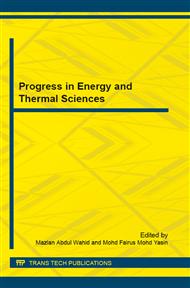[1]
B. Krajewska, Application of chitin and chitosan-based materials for enzyme immobilizations: a review, Enzyme and Microbial Technology 35 (2004) 126–139.
DOI: 10.1016/j.enzmictec.2003.12.013
Google Scholar
[2]
T. Xie, A. Wang, L. Huang, H. Li, Z. Chen, and Q. Wang, Recent advance in the support and technology used in enzyme immobilization, Afr. J. Biotechnol. 8 (2009) 4724–4733.
Google Scholar
[3]
R.A. Sheldon, Enzyme immobilization: the quest for optimum performance, Adv. Synth. Catal. 349 (2007), 1289–1307.
DOI: 10.1002/adsc.200700082
Google Scholar
[4]
S.B. Hartono, S.Z. Qiao, J. Liu, K. Jack, B.P. Ladewig, Z. Hao, and G.Q.M. Lu, Functionalized mesoporous silica with very large pores for cellulase immobilization. J. Phys. Chem. C 114 (2010) 8353–8362.
DOI: 10.1021/jp102368s
Google Scholar
[5]
J. Lee, H.B. Na, B.C. Kim, J.H. Lee, B. Lee, J.H. Kwak, Y. Hwang, J. Park, M.B. Gu, J. Kim, J. Joo, C. Shin, J.W. Grate, T. Hyeon and J. Kim,. Magnetically-separable and highly-stable enzyme system based on crosslinked enzyme aggregates shipped in magnetite-coated mesoporous silica, J. Mater. Chem. 19 (2009).
DOI: 10.1039/b909109b
Google Scholar
[6]
A. Illanes, R. Fernandez-Lafuente, J.M. Guisan, and L. Wilson,. Heterogeneous enzyme kinetics. in A. Illanes (Ed. ), Enzyme Biocatalysis, Springer Science + Business Media B.V., Valaparaiso, 2008, p.155–203.
DOI: 10.1007/978-1-4020-8361-7_4
Google Scholar
[7]
J. Kim, H. Kim, U.S. Patent 2013/0130284 A1. (2013).
Google Scholar
[8]
R.A. Sheldon, M.J. Sorgedrager, and B. Kondors, U.S. Patent 2013/0196407 A1 (2013).
Google Scholar
[9]
M.I. Kim, J. Kim, J. Lee, H. Jia, H.B. Na, J.K. Youn, J.H. Kwak, A. Dohnalkova, J.W. Grate, P. Wang, T. Hyeon, H.G. Park and H.N. Chang,. Crosslinked enzyme aggregates in hierarchically-ordered mesoporous silica: a simple and effective method for enzyme stabilization, Biotechnology and Bioengineering 96 (2007).
DOI: 10.1002/bit.21107
Google Scholar
[10]
T.K. Ghose, V.S. Bisaria, Measurement of hemicellulase activities part 1: xylanases. Pure & Appl. Chem. 59 (1987) 1739—1752.
DOI: 10.1351/pac198759121739
Google Scholar
[11]
T.K. Ghose, Measurement of cellulase activities. Pure & Appl. Chem. 59 (1987) 257—268.
Google Scholar
[12]
D. Zhang, L. Yuwen and L. Peng, Parameters affecting the performance of immobilized enzyme, Journal of Chemistry 2013 (2013) 7.
Google Scholar
[13]
M. Zuza, S. Siler-Marinkovic, and Z. Knezevic,. Immobilization of penicillin acylase from Escherichia coli on commercial sepabeads EC-EP carrier. APTEFF 190 (2007) 173–182.
DOI: 10.2298/apt0738173z
Google Scholar
[14]
W. Tischer, F. Wedekind, Immobilized enzymes: methods and applications. in Current Chemistry, Springer Verlag, Berlin, 1999, p.95–126.
Google Scholar
[15]
L. Wilson, A. Illanes, and O. Romero, Effect of inactivation and reactivation conditions on activity recovery of enzyme catalysts, Electronic Journal of Biotechnology 16 (2013) 1-13.
DOI: 10.2225/vol16-issue3-fulltext-11
Google Scholar


